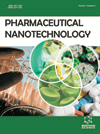
Full text loading...
We use cookies to track usage and preferences.I Understand
This study aimed to develop an anti-aging nanoformulation with Curcuma heyneana extract as bioactive substance.
Curcuma heyneana Valeton & Zipj extract has been proven in previous research to have antioxidant, anti-ageing, anti-inflammatory, and wound healing properties, which makes it a potential bioactive material for anti-ageing and sunscreen cosmetic products. Phytoantioxidants need to penetrate into deeper skin layers to ensure effectivity. Thus, a transdermal delivery system is needed to deliver the extract to a deeper skin layer.
The objective of the study was to compare the permeability and anti-ageing activity of liposomal and ethosomal formulations of C. heynena rhizome ethanolic extract.
In this study, C. heyneana extract was loaded into a phospholipid vesicular system in the form of liposome and ethosome formulations using the ethanolic injection method. The anti-ageing activity was assessed by analyzing the epidermal thickness, number of sunburn cells, distance between collagen fibers, and number of fibroblasts. While the histologic specimen scoring was carried out for the in vivo penetration study.
The ethosomal formulation had been found to have better penetration ability since it was able to reach the lower dermis area compared to the liposomes, which only reached the upper dermis. The ethosomal formulation of C. heyneana extract exhibited a better anti-ageing activity based on the parameters of epidermal thickness, sunburn cell count, fibroblast count, and the distance between collagen fibres in rat skin histology.
Ethosomes have been found to be a more proficient carrier system for transdermal delivery of C. heyneana extract compared to liposomes. Meanwhile, their penetration correlated with the effectivity of the formulation, suggesting that the vesicular system enhanced the penetration ability of the extract.

Article metrics loading...

Full text loading...
References


Data & Media loading...

